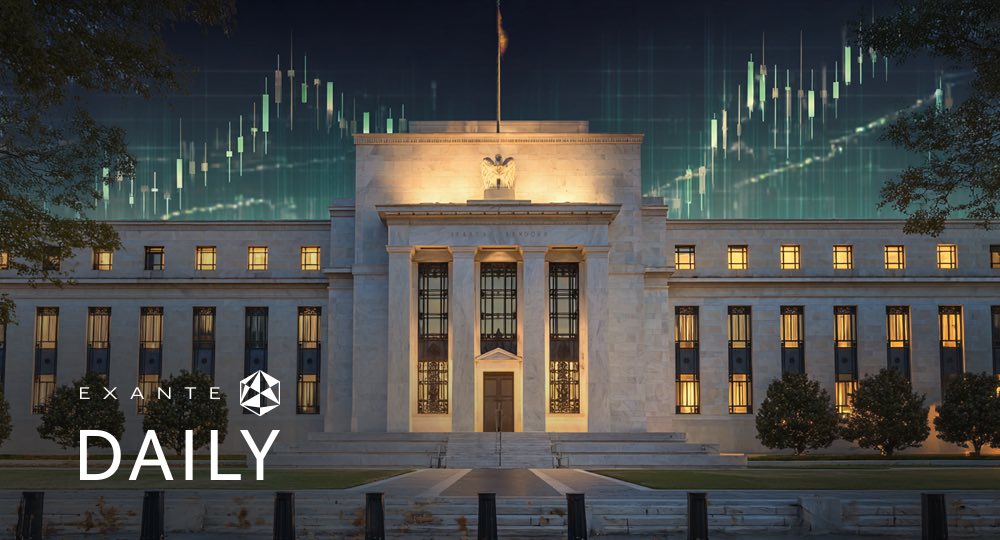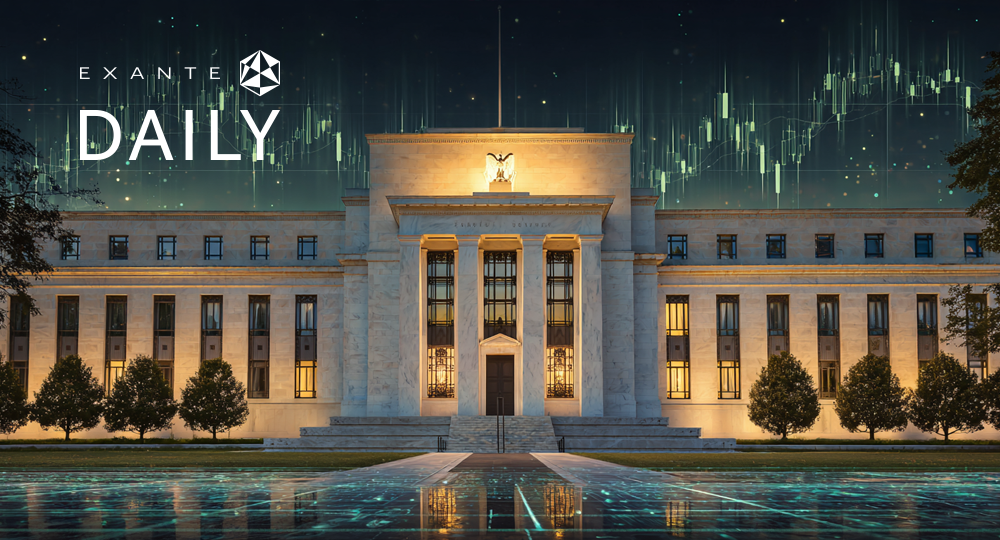
Fixed Income Briefing September 2024

- It appears that rates have peaked and attention is now focused on the pace and size of Fed rate cuts in response to unemployment data and softer growth. The market's attention will be on August’s Personal Consumption Expenditures (PCE) data, the Fed’s preferred inflation gauge, due for release later this week.
- The dollar index has fallen in September. It is currently down -0.83% YTD. On 24 September it fell -0.55%, its largest daily percentage drop in two weeks, to 100.35. The US labour market continues to soften, with total nonfarm payroll employment increasing by 142,000 in August, below the average monthly gain of 202,000 over the prior 12 months. Average hourly earnings increased by 0.4%. The unemployment rate is currently at 4.2%, down from July’s 4.3%. The labour force participation rate remained at 62.7% in August. The Conference Board's consumer confidence index suffered its biggest one-month decline in three years in September, coming in at 98.7 in September, from an upwardly revised figure of 105.6 in August. The Expectations Index, based on consumers' short-term outlook for income, business, and labour market conditions, fell by 4.6 points to 81.7, but remained above 80. A reading below the threshold of 80 usually signals a recession ahead. The share of consumers who viewed jobs as "plentiful" was 30.9%, down from 32.7% in August. Some 18.3% of consumers said jobs were “hard to get,” up from 16.8% in August. The September report indicated that all five components of the Index deteriorated. Consumers’ assessments of current business conditions turned negative while views of the current labour market situation softened further. Consumers were also more pessimistic about future labour market conditions and less positive about future business conditions and future income.
- The flash Composite PMI Output Index in September was 54.4 compared to a final reading of 54.6 in August. The Flash US Services Business Activity Index for August came in at 56.0, also up from June’s 55.3, a 28-month high. The service sector outperformed manufacturing for a fourth straight month. The Flash US Manufacturing PMI contracted for a third month, falling to 48.0 from July’s 49.6. All five components of the PMI weakened in August and manufacturing employment growth meanwhile slowed to near-stagnation. Average prices charged for goods and services rose at their quickest pace since March, marking the first acceleration of selling price inflation in four months.
Yield curves
Treasuries yields continued to steepen this month as the Federal Reserve made its first interest rate cut in more than four years. The Fed decided to front-load policy easing, cutting rates by 50 bps, taking the target range for the Fed funds rate to 4.75 - 5.0%. It projected 50 bps more of cuts in 2024 followed by a total of 100 bps of cuts in 2025 and 50 bps in 2026. This may be seen as a sign of the Fed’s growing confidence that it is well down the disinflation path and shifted the Fed focus to the labour market. During the FOMC press conference Fed Chair Jerome Powell stated that this move was meant to demonstrate policymakers' commitment to sustaining a low unemployment rate. There is a 40% chance of a 25-basis-point cut and a 60% chance of a bigger 50-bp reduction at the Fed’s November meeting, according to the CME FedWatch tool.
The yield on the 2-year Treasury note, which is highly sensitive to movement of the Fed Funds rate, has fallen from 3.902% in August to 3.539% in September. The benchmark 10-year US Treasury note yield has fallen to 3.729%, while the yield on the 30-year bond has also fallen to 4.084%. The steepening has resulted in the 2/10 spread nearing +20 bp as of 24 September.
Yield swings
US Treasury yields have declined in September, with the largest drop happening at the shorter end of the curve, although there was some degree of volatility earlier in the month as markets were torn between the prospect of a 25 vs 50 bps cut. However, with the Fed having committed itself to further rate cuts this year with latest FOMC projections indicating about 50 bps more of cuts, futures traders are even more optimistic, pricing in about 75 bps of cuts in 2024. Fed funds rate expected to be at around 3.25% by mid-2025.



Source: FactSet

Source: FactSet 6:15 PM EDT 24 September 2024
Global Economic and Market Review
In the UK, inflationary pressures remained steady with the headline rate in August unchanged from August’s 2.2% year-on-year. This was below the Bank of England’s forecast of 2.4%. While core inflation measured 3.3%, services inflation remained elevated at 5.6%, up from July’s 5.2% but still below the BoE’s forecast of 5.8%. According to the UK’s Office of National Statistics, the UK's unemployment rate for May to July 2024 was 4.1%, which is lower than the previous year's estimate of 4.2%. The annual growth in total earnings (excluding bonuses) for the April to June period was 4.5%.
On the growth front the UK appears to be stagnating. Gross domestic product was unchanged after flatlining in June. Although the first half of the year saw an expansion of 1.3%, the performance in the second half is likely to be significantly weaker, with the Bank of England forecasting growth of 0.3% on average in the third and fourth quarters. The S&P Global Flash UK PMI Composite Output Index fell to 52.9 and down from August’s 53.8. The flash Services PMI reached a two-month low of 52.8, down from August's 53.7 reading. Manufacturing also declined, hitting a three-month low of 51.5, down from the August reading of 52.5. Consumer confidence fell sharply in September with the Gfk Consumer Confidence Index falling to -20 points in September from -13 points in August, marking the sharpest monthly decline in consumer confidence since April 2022. The index measuring changes in personal finances over the past year was down two points at -9, while the outlook for the next 12 months was down nine points at -3. Neil Bellamy, the consumer insights director at GfK, said that “Following the withdrawal of the winter fuel payments, and clear warnings of further difficult decisions to come on tax, spending and welfare, consumers are nervously awaiting the budget decisions on 30 October.”
During the September monetary policy meeting, the Bank of England (BoE) kept its rates at 5.00%. However, BoE Governor Andrew Bailey said easing would continue “gradually” and that interest rates were unlikely to fall back to ultra-low levels in the UK without another bout of economic crises on the scale of the financial crisis and the pandemic. This suggests that the neutral rate may be higher than the lower levels seen in recent years. Markets anticipate only 40 bps more of cuts by December, which would leave the base rate closer to 4.50%. However, given weakening PMIs, cooler wage growth and a slow down in services inflation, markets may be underpricing the extent of cuts the BoE may need to do in the next two quarters.
In the eurozone the ECB cut rates again in September by 25 bps as eurozone inflation fell to 2.2% in August 2024, down from 2.6% in July. Core inflation - excluding volatile items such as food, energy, alcohol, and tobacco -was 2.8% year on year, slightly down from July’s 2.9%. Services inflation increased from 4% in July to 4.2% in August. On the growth front, the eurozone HCOB flash Composite PMI fell from 51.0 in August to 48.9 in September. As noted by S&P Global, this is consistent with GDP falling at a 0.1% quarterly rate, dragging the average reading for the third quarter as a whole to a level signalling near-stagnation. The flash composite PMI for Germany also continued to fall, signalling a contraction of output for a third successive month. The index dropped from 48.4 in August to 47.2 to signal the steepest contraction since February. The steepest fall in manufacturing output for 12 months in Germany was accompanied by a near-stalling of service sector growth. Overall, this suggests that the risks of the eurozone economy facing a 'hard landing' have risen. According to money markets, traders are currently estimating a roughly 45% chance of an ECB rate cut in October.
The benchmark German 10-year yield was -8.50 bps as of 24 September at 2.142%, while the UK 10-year yield was -2 bps as of 24 September at 3.937%. The spread between US 10-year Treasuries and German Bunds expanded by +2.3 bps over the month. It currently stands at 159.2 bps. The gap between Italy and Germany's 10-year yields, a gauge of investor sentiment towards the eurozone's more indebted countries, is, according to Worldgovernmentbond.com, now at 133.4 basis points, down from August’s 138.3 basis point differential.
Global bond markets are likely to remain volatile in Q4. The risks of widening tensions in the Middle East, the ongoing war in Ukraine, growing trade fragmentation with increasing threats of tariff wars between the US, Europe and China, and the increasing risk around the US election, will continue to affect yields and the US dollar. There are also unresolved policy issues related to immigration in the US, UK and Europe that will affect labour markets. In addition, uncertainty over the ability of China to increase domestic demand and the implications this has on global oil demand may make energy prices more volatile in the short to medium term.
With less than 6 weeks until the US elections, investors will have to consider the potential changes in US election outcomes with the consequent implications for the repricing of government debt and term premia. Investors may wish to consider adding in some inflation protection into their portfolios along with yield-spread targeting. They may also wish to think about adding yield curve steepeners given that the market may be overpricing a soft landing in the US. For Europe, although the ECB has begun its easing process, it remains cautious with guidance being very limited. Therefore given the softening of the macro environment, there is scope for the ECB to ease more quickly. This implies that investors may wish to focus on extending duration.
Key risks
- Inflation fails to fall in line with projections, weighing on asset prices. Although inflation is falling in Europe, the UK and the US, it may not fall in line with projections due to sticky services costs, particularly in Europe. There are also risks that headline inflation may rise due to commodity prices rising, particularly for gas in Europe. Yields on longer-dated Treasuries that are most sensitive to the inflation outlook have risen to the highest since early September. This has, as noted by Reuters, caused some investors to worry that the Fed's shift in focus from inflation to protecting the job market could allow for a rebound in price pressures. However, as indications are that inflation in the US is largely in line with Fed projections, and with the Fed having started its rate cutting cycle, there is more scope to easy policy if recession risks were to materialise.
- Policymakers over or undershoot. Central banks are being very cautious about getting the balance between supporting their economies while fighting future inflation risks but could still get it wrong with growth rates starting to fall faster in the US than currently expected. There are potential headwinds to dollar weakening as US growth expectations continue to be pared back. However, if the eurozone and China, despite its 24 September announcement of stimulus measures including policy rate and reserve requirement ratio (RRR) cuts, reductions in outstanding mortgage rates, and liquidity injections into the stock market, both continue to show disappointing growth, this may reverse some dollar weakness. It should be remembered that a significant variation in the timing of rate cuts could also cause currency volatility.
- Geopolitical tensions and events. Tensions in the Middle East are rising almost by the minute and the continuing war in Ukraine is still a large risk for European economies, particularly as we are approaching the winter heating season. The tensions in the South China Seas between the Philippines and China remain as well as between the US and China in relation to Taiwan. Also in October there are the ASEAN summits, which may make the differences in economic, political, and security issues between the members more obvious as well as the BRICS leaders summit, which now includes not just Brazil, Russia, India, China and South Africa – but five important new members: Saudi Arabia, United Arab Emirates, Iran, Egypt and Ethiopia, which will once again put the US dollar under the spotlight as Russia is, according to an OMFIF report, planning a new denomination for oil, – the petroyuan – its own mBridge system to pay for oil along with a BRICs currency.
While every effort has been made to verify the accuracy of this information, EXT Ltd. (hereafter known as “EXANTE”) cannot accept any responsibility or liability for reliance by any person on this publication or any of the information, opinions, or conclusions contained in this publication. The findings and views expressed in this publication do not necessarily reflect the views of EXANTE. Any action taken upon the information contained in this publication is strictly at your own risk. EXANTE will not be liable for any loss or damage in connection with this publication.
This article is provided to you for informational purposes only and should not be regarded as an offer or solicitation of an offer to buy or sell any investments or related services that may be referenced here. Trading financial instruments involves significant risk of loss and may not be suitable for all investors. Past performance is not a reliable indicator of future performance.




